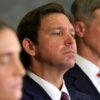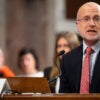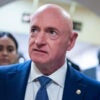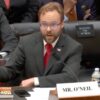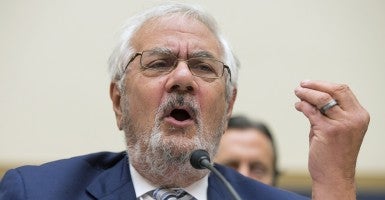This month marks the 45th anniversary of man landing on the moon, and the fourth anniversary of the signing of the Dodd-Frank Wall Street Reform and Consumer Protection Act. The two events couldn’t be more different.
The moon landing was a rousing, tangible achievement that millions watched on TV. Dodd-Frank was an amorphous piece of legislation that failed to get the scrutiny it deserved. Even Congress and federal regulators can’t agree on what the bill requires.
Most people believe Neil Armstrong and Buzz Aldrin walked on the moon, but a fringe movement insists the U.S. faked the landing in a movie studio. The size of that contingent stands in stark contrast to the large numbers of people who still insist financial market deregulation caused the 2008 crisis.
One recent poll even suggests that most Americans think more regulation is the answer, that Dodd-Frank solved the problems which caused the crisis, and that the law didn’t go far enough to punish private firms responsible for the crisis.
But a new House Financial Services Committee report shows just how ill-conceived these opinions really are.
For starters, financial markets have been highly regulated for at least a century, even in the years preceding the recent crisis. The notion that our markets were free from regulation is false. In fact, various statistics suggest that financial market regulation has been steadily increasing, even in the decade leading up to the crisis.
For instance, the committee report identifies five key pieces of legislation passed between 1991 and 2003 that expanded regulations. Furthermore, federal financial regulators’ budgets (adjusted for inflation) increased from 2000 to 2008.
The total budget of these regulators, excluding the Securities and Exchange Commission, increased from about $2 billion to almost $2.3 billion. The SEC’s budget almost doubled from $357 million in 2000 to $629 million in 2008.
Still, critics have pointed to the so-called repeal of Glass-Stegall, the Depression-era law that separated commercial and investment banking, as deregulatory. But all the 1999 Gramm Leachï Bliley Act did was allow bank holding companies to affiliate with firms engaged in activities such as securities and insurance underwriting – both of which are regulated businesses.
The notion that GLBA allowed commercial banks to take in deposits and invest that money in the stock market is completely wrong. Further, allowing holding companies to own separate asset-management firms presents no risk to the banks’ traditional deposits.
Lost in this debate is the fact that after GLBA, the Fed approved applications to become a holding company only after certifying that both the holding company and all of its subsidiary depository institutions were well-managed and well-capitalized (among other requirements). Not only did Dodd-Frank give the Fed a pass for any regulatory mistakes it made with these firms, it expanded the Fed’s regulatory reach. The same can be said for virtually all of the federal financial regulators.
Basically, Dodd-Frank’s answer to everything was to institute more regulation and oversight even though that approach has repeatedly failed.
For example, Dodd-Frank created the Financial Stability Oversight Council, a committee of regulators that can force new regulations on financial firms in the name of safeguarding financial stability. The bill also created the Consumer Financial Protection Bureau, an agency bent on controlling virtually all aspects of the home mortgage market under the guise of “protecting” consumers.
The notion that federal regulators will now finally get things right and end financial crises is pure fantasy. It’s an even bigger fiction to argue that Dodd-Frank has ended the specter of financial firms being rescued at taxpayer expense (the “too-big-to-fail” problem).
It’s true that the law is not yet fully implemented. For instance, rules have not yet been proposed to meet almost 25 percent of the bill’s rulemaking requirements, and the FSOC can perpetually create new regulations. But the sections of Dodd-Frank that have been implemented are now widely recognized to have perpetuated – and likely worsened – the too-big-to-fail problem.
For starters, the FSOC identifies the firms whose failure regulators would consider catastrophic to the economy. Compounding that problem, Title II of Dodd-Frank gave regulators the Orderly Liquidation Authority. Title II authorizes the Federal Deposit Insurance Corporation to wind down certain firms instead of allowing them to go through bankruptcy.
Under this process, the FDIC acts as the receiver of the firm’s parent holding company, and it transfers the parent’s assets, derivatives, and short-term obligations to a newly created “bridge” company. The bridge is exempt from paying all federal, state, and local taxes.
This process is designed to allow the firm’s operating subsidiaries to continue functioning, and the bridge company will recapitalize subsidiaries if necessary. As a result, the managers of the subsidiaries – as well as the firm’s creditors – know they have a federal backstop for their activities. This backstop prevents the market from disciplining private actors and all but ensures we’ll end up with even more risky lending.
If anything, Dodd-Frank has made the financial system even more fragile than it was prior to the 2008 crisis. Hopefully, the number of Dodd-Frank defenders will be as small as the moon-landing deniers before the next crisis hits.
Originally posted on The Fresno Bee.
